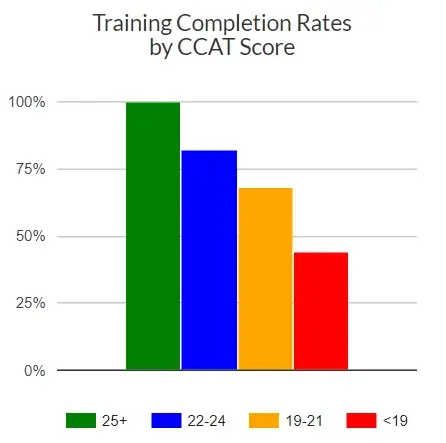A company’s hiring success can be measured using a wide variety of metrics. In an earlier blog post, we outlined some of the key hiring metrics that employers should track in order to stay on top of the success of their hiring initiatives. Many of these hiring metrics are obvious, like time-to-hire and employee turnover. But another key metric that we’ve found to be a direct reflection of the hiring process is the rate at which new employees successfully complete training.
Training Completion as a Hiring Metric
The main goal of the hiring process is to identify and hire the candidates who are most likely to succeed within that particular role. As every employer knows, not every hire will be a success, but the aim is to get your hiring success rate as high as possible. The “success” of a hire is a little hard to pin down and can be a bit subjective, but the first place you can start to quantify this success is at the training level.
Training is the first instance where your new hires are put to the test, and if you notice a high number of new hires failing to complete the training, you may want to take a closer look at your selection process. Of course, training completion rates aren’t solely influenced by hiring the right people. Training completion is also heavily influenced by the effectiveness of the training program itself, the complexity of the subject matter, the managers administering the training, and the resources available to them. But what we’ve found through numerous studies with our customers is that small changes in the hiring process can have a direct and dramatic impact on the rate at which your new hires complete training, leading to major reductions in hiring and training costs.
How to Measure Training Completion
The most basic formula for training completion is very simple – take the number of employees who successfully complete training and divide by the total number of employees hired.

The training completion rate can be calculated across the entire organization throughout a single period, like a year or 6 months. Far more relevant, however, would be to evaluate training completion rates for particular roles, such as sales representatives or analysts. By segmenting the training completion rate by position, you can start to pinpoint any problems that might arise. It’s also important to remember that this rate is more reliable the greater your sample size. If you’re basing your decisions off of a hiring class of 5 people, the insights you get from the training completion rate may not be that helpful. However, when you’re evaluating a training completion rate based on a group of 50 or more, you’ll start to see statistically significant patterns emerge.
How to Improve Training Completion Rates
As we mentioned earlier, training completion rates are affected by a wide variety of factors, but one of the first places to start is by reevaluating how you’re selecting candidates in the hiring process.
The most impactful way to improve training completion rates is by incorporating hiring tactics that are more predictive of future job success. Pre-employment tests, and particularly cognitive aptitude, tests, are one of the best predictors of job performance, far more predictive than resumes, unstructured interviews, or education level. Companies that use pre-employment tests to select new hires can see dramatic improvements in their training completion rates because assessment scores are so highly correlated with job performance.
Take one company that wanted to improve the training completion rates of its loan officers. New hires at this consumer finance company were required to go through 3-4 weeks of intensive training, ending in a federally mandated licensing exam. The company began administering the CCAT, a cognitive aptitude test, as part of the hiring process and found that CCAT scores were extremely successful at predicting the likelihood that someone would complete the training. In fact, 100% of the employees who scored above average on the test were able to complete the training, compared to just 44% of the lowest scoring group. Moving forward, the CCAT helped the company dramatically reduce turnover and lower hiring and training costs.

Ultimately, the first step to improving training completion rates is to start measuring it. If every single employee you hire successfully passes through the training process, then very little effort is necessary to monitor this metric. But if you start to notice new hires failing out of training, it helps to first quantify the problem, then implement strategies to improve it, and then to continue measuring it to make sure it improves over time.





